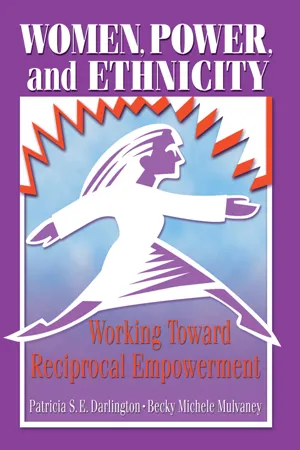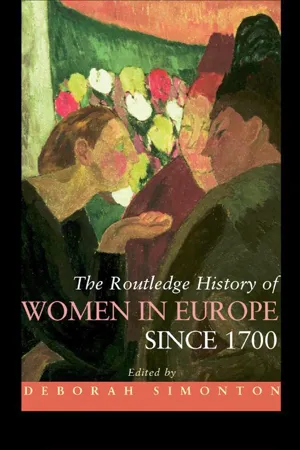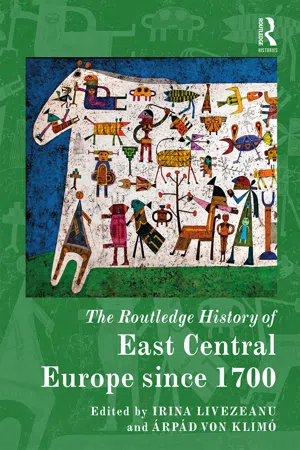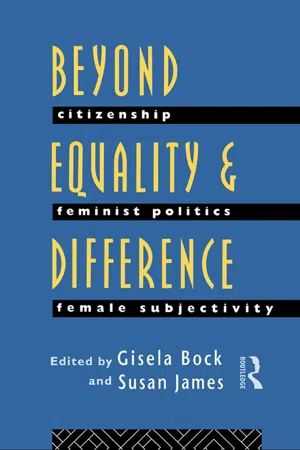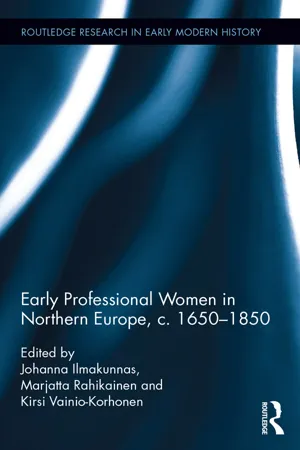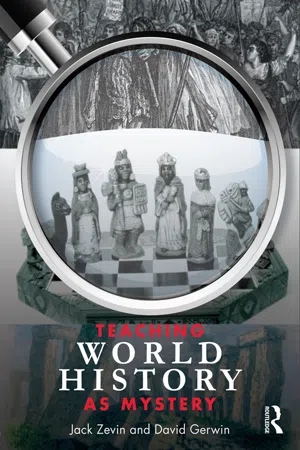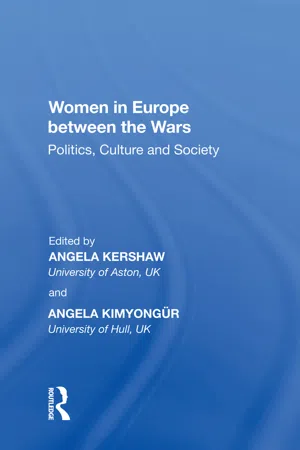History
Women in Europe
"Women in Europe" refers to the historical experiences, roles, and contributions of women across the continent. This encompasses various aspects such as women's rights movements, social and economic status, and cultural representations. The study of women in Europe provides insights into the changing dynamics of gender relations, societal norms, and the impact of historical events on women's lives.
Written by Perlego with AI-assistance
Related key terms
7 Key excerpts on "Women in Europe"
- eBook - ePub
Women, Power, and Ethnicity
Working Toward Reciprocal Empowerment
- Patricia S.E. Darlington, Becky Michele Mulvaney(Authors)
- 2014(Publication Date)
- Routledge(Publisher)
What we had not considered, however, is that since the breakup of the Soviet Union, the phrase “European-American immigrants” has taken on a more nuanced meaning. In our study, however, the majority of European-American women who participated fit our original conception of the category, with just a few participants identifying themselves as recent immigrants from Eastern European countries that had previously been under Soviet control. Women in European Cultures Much has been written about Women in European cultures from antiquity to contemporary Europe, therefore we do not presume to offer an overview of the roles of women in particular European cultures or within particular time periods. To provide context to our analysis of ethnographic findings, we provide only a brief summary of the conditions experienced by European women during the time that migration from Europe to the United States was particularly significant. A succinct way to offer this summary is to review the various themes and patterns concerning gender in Europe that Caine and Sluga (2000) discuss in their gender analysis of the history of Europe. Despite differences in the development of various parts of Europe during the eighteenth and nineteenth centuries, Caine and Sluga argue that four themes affected the lives of European women: citizenship and sexual difference, the ideology of separate spheres, gender and nationalism (as well as imperialism), and social Darwinism and racial ideologies. As for the first theme, during the Enlightenment and the French Revolution, ideas about sexual difference and the rational nature of man framed major political activities and ensured that the “idea of female citizenship was constituted as fundamentally problematic” (Caine and Sluga, 2000, p. 4). For example, during the French Revolution a disdain for women’s political expression led to subordination of women and their confinement to “the world of family and home under the supervision of a male household head” (p - Deborah Simonton(Author)
- 2006(Publication Date)
- Routledge(Publisher)
3 In fact, for most of the period covered by this book, Germany was not a nation, and for a while it was actually two. Just as importantly, intellectual, political and economic developments have not respected national boundaries, neither has the story of women’s past nor the interplay of gender and culture. Within European women’s history, there has been a move to be sensitive to region and local experience, something which at once creates new boundaries while possibly breaking down old ones. To some extent, this reflects current political developments in Europe, which value regional interests and which, in parts of Europe, have created devolved power structures. By questioning the spatial paradigms within which we implicitly write, this book has helped us reflect on how new frontiers and borders produce other narratives, narratives that cross national borders and that seek respondents outside Europe. As a group of feminist historians from a number of countries, with diverse research interests both thematically and geographically, we have been in conversation about how we relate to history and how the history we write deals with the issues of geographical and methodological boundaries. We are writing women in modern Europe.Transnational history
This book is a transnational history of Women in Europe from approximately 1700. It is organised topically rather than either geographically or chronologically, and it is structured around single-voiced examinations written by scholars working across Europe and the USA. It was conceived as largely western and central European, incorporating Britain and Ireland, and treating regional variation as more significant than political boundaries. One of the greatest challenges has been to confront our own perceptions, exploring beyond our individual research areas to produce a genuinely transnational European history. The authors have striven to ensure Europe is embraced, and research on Belgium, the Netherlands, Scandinavia, the Baltic and southern Europe has been incorporated, though we would acknowledge that our own areas of familiarity have often shaped our thinking. Shared European traditions, histories and cultural developments permit an emphasis on aspects of both similarity and difference, and provide the basis for a more coherent approach, which would be difficult to sustain if widely variant cultural traditions were introduced. Some of the authors have drawn on eastern Europe, but a fully integrated history of Europe awaits both the research and an author bold enough to take it on. The state of research in women’s history in eastern Europe, including European Russia, and the relative lack of information in languages the authors can read have also limited how much can be incorporated. There have been inroads on this lack of knowledge in the West about the East, such as research by Jane McDermid, Barbara Alpern Engel, Rose L. Glickman, Linda Edmondson, Beatrice Farnsworth, Lynne Viola and the recent translation of work by Natalia Pushkareva, to name a few. Work on areas outside of Russia is also beginning to trickle through.4- Irina Livezeanu, Arpad von Klimo(Authors)
- 2017(Publication Date)
- Routledge(Publisher)
p.278 6WOMEN’S AND GENDER HISTORY 1Krassimira Daskalova and Susan ZimmermannSince the 1980s, historians working on East Central Europe, as on other parts of the world, have shown that historical experience has been deeply gendered. This chapter focuses on the modern history of women, and on gender as a category of analysis which helps to make visible and critically interrogate “the social organization of sexual difference.”2 The new history of women and gender has established, as we hope to demonstrate in this contribution, a number of key insights. First, gender relations are intimately related to power relations. Gender, alongside dominant and non-dominant sexualities, has been invoked persistently to produce or justify asymmetrical and hierarchical arrangements in society and culture as a whole, to restrict the access of women and people identifying with non-normative sexualities to material and cultural goods, and to devalue and marginalize their ways of life. Second, throughout history both equality and difference between women and men have typically resulted in disadvantage for women. Men and women have generally engaged in different sociocultural, political and economic activities, and this gender-based division of labor, which has itself been subject to historical change, has tended to put women in an inferior position. Even when women and men appeared as equals in one sphere of life, this perceived equality often resulted in drawbacks or an increased burden for women in another area and women’s contribution was still devalued as compared to men’s.Third, women – and sometimes men – have resisted and challenged these arrangements in myriad ways, with more or less success. As gender history has developed these insights, it has generated scholarly interest in themes and fields of inquiry that were previously considered marginal or secondary, or as anthropological constants not subject to historical change. In this way, this relatively new field has contributed enormously to the broadening of our understanding of East Central European history as such. This chapter examines the history of women’s lives, status, and experience. Wherever possible we do this in comparison to men’s lives, status, and experience, so as to highlight historically changing gender norms and social practices. The chapter also discusses differences among women and those with marginalized gendered identities.- eBook - ePub
Beyond Equality and Difference
Citizenship, Feminist Politics and Female Subjectivity
- Gisela Bock, Susan James(Authors)
- 2005(Publication Date)
- Routledge(Publisher)
What I am proposing here is a re-examination and reconceptualization of the public understanding of this word ‘feminism’, based on the history of the word and its cognates and on evidence of its use from comparative history. A historical understanding and definition of the term ‘feminism’ seem to me to be essential conditions for becoming more politically effective today and in the future.EUROPEAN HISTORY AND THE HISTORY OF FEMINISM
The study of continental European women’s history can contribute important insights to the exercise of defining feminism. It allows us not only to recover and dissect the prevailing and dissenting views on the organization of societies, embedded historically in the western debate on ‘the woman question’ (as this controversy came to be known in the nineteenth century), but also to explore the political dynamics of their interaction.In the early 1970s, when my generation of historians, trained in the United States, began to investigate the history of European women and European women’s movements, we understood feminism in a rather simplistic and straightforward way, according to a composite English-language definition then found in most American dictionaries. A feminist was, of course, defined as a person who espoused feminism. But what was feminism? The dictionary definition (in composite) read approximately as follows: a theory and/or movement concerned with advancing the position of women through such means as achievement of political, legal or economic rights equal to those granted men. This ‘equal rights’ perspective was also conveyed by the best-known histories of the American women’s movement published prior to 1970, in which feminism effectively began in 1848 at Seneca Falls and the focus was on votes for women. The key notion here is the means to the end of ‘advancement’: ‘rights equal to those granted men’.Notice the extent to which this legalistic definition of ‘equal rights’ proposes the standard of male adulthood as the norm. It is a definition expressed in a vocabulary of ‘rights’ common to the western tradition but developed most explicitly in the political theory and practice of Great Britain and the United States, which have so long elaborated the rights and privileges of male individuals on grounds of principle. For women, the vote, the attainment of legal control over property and person, and entry into male-dominated professions and institutional hierarchies became the representative issues. - Johanna Ilmakunnas, Marjatta Rahikainen, Kirsi Vainio-Korhonen(Authors)
- 2017(Publication Date)
- Routledge(Publisher)
Women and professional ambitions in Northern Europe, c. 1650–1850 Johanna Ilmakunnas, Marjatta Rahikainen and Kirsi Vainio-KorhonenEurope of the 1650s was very different from Europe of the 1850s. In the mid-seventeenth century, Western Europe east of the English Channel, only just recovering from the Thirty Years’ War, witnessed the rise of the aristocracy and the absolutist state. In the mid-nineteenth century, Western Europe witnessed the end of the revolutionary era, the expansion of educated middle classes and the triumph of moneyed bourgeoisie, while in Eastern Europe the old order counterchecked the new one.After half a century of substantial scholarly work focusing on women’s history, we now know a great deal about what all this political, social and economic change indicated for women in different social conditions and settings. Recent scholarship has significantly enhanced our understanding of women’s daily life, work and occupations in the early modern and modern eras.1 Women’s work was fundamental on all levels of society: for women as individuals, for their families and communities and from the micro economy to the macro economy. Intensive research activity concerning economically active women has convincingly shown that despite all statutes, laws and established privileges that restricted or prohibited women’s access to several trades, women found numerous ways to circumvent them. No doubt there were men in whose interests it was to facilitate this in order to make business run more smoothly.Moreover, the very concepts of work and occupation have been thoroughly re-read, and scholars have questioned work as solely a source of income, discussing instead different conceptualizations of work and labour held by both contemporaries and scholars. Research on various verbal and cultural meanings of work has revealed new dimensions of female activity and work life. Women from all social strata described themselves as working, or their activities were described by others as work, even though the number and variety of sheer words varies in different sources from court records to letters and diaries to account books and advertisements.2- eBook - ePub
- Jack Zevin, David Gerwin(Authors)
- 2010(Publication Date)
- Routledge(Publisher)
If we teach a US survey following a traditional textbook, the text will barely mention women. If we then simply “add” women, we have improved on this outline but not by much. The women we have added will either be women much like the men we talk about or they will look inferior by comparison with the men. To make women central to our conceptual framework we must assume that what they do and think is equally important with what the men do and think. If we make such an assumption, we will ask about every unit we teach: what were the women doing while the men were doing what we are teaching? and, going an analytical step further, how did the women interpret what they were doing?(Gerda Lerner keynote address, Lowell Conference on Women’s History, 1988, reprinted in Why History Matters , 1997, p. 143)In historical texts, the problem with female representation is not only because of gender bias, but also because of historical bias in favor of political and economic history over cultural, social, and ecological history. Thus, as most of our texts describe male figures who (one could argue if one were mean-spirited) engineered governments, wars, and imperialistic schemes, and caused the loss of enormous amounts of lives and capital, these texts have pushed women’s roles in history aside to make room for the drama of bloodlust and sweeping warfare.We believe that the role of women in world history is a many-layered onion that can be peeled back to offer an array of problems—historical blindness, bias, memory failure, and unequal treatment. Their roles are communicated in narratives that are subtle and obvious, charmingly cloying and amazingly brutal. Deeply imbedded in how we write about, picture, and portray women in world history are questions of gender bias, social structure, biological differences, and cultural values. These are the questions we hope to investigate in this chapter, by providing you with a framework for detective work into a number of famous and ordinary women. Each case study is one piece of an overall puzzle through which we seek to illuminate and test different theories about the role of women in world history. - eBook - ePub
Women in Europe between the Wars
Politics, Culture and Society
- Angela Kimyongür(Author)
- 2017(Publication Date)
- Routledge(Publisher)
Chapter 1 Women in Europe between the Wars: a Culture of Contradictions Angela Kershaw and Angela KimyongürGriffin and Braidotti's Thinking Differently: A Reader in European Women s Studies begins with an ironic challenge to the reader to name five feminists from the United States, five from Britain and five from other European countries.1 An equally difficult challenge might be to ask readers about to embark on this book to name five women active in European politics, culture or professional life during the years between the two World Wars. The difficulty of such a task is unsurprising given the recurrence in the essays in this volume of motifs of exclusion and marginalization, experiences which characterized women's activities in all areas of public life during the inter-war period. Politics continued to be defined as a masculine sphere, even after the granting to women of the right to vote and to stand for election; in literature, women's writing was excluded from the canon and thereby from serious critical consideration; in professional life - journalism, public service or education, for example - women had to fight for recognition and resist discourses which often sought to relegate them to the private sphere.And yet, it is not sufficient to approach the study of women in the inter-war period only from the perspectives of marginalization and exclusion. A wide range of research has already shown that inter-war women certainly were active in the cultural, political and social domains between the wars. Nonetheless, their activities and achievements are not necessarily familiar to readers today. In some cases, this is because adequate account was not taken of their activities by critics and commentators at the time.2
Learn about this page
Index pages curate the most relevant extracts from our library of academic textbooks. They’ve been created using an in-house natural language model (NLM), each adding context and meaning to key research topics.
